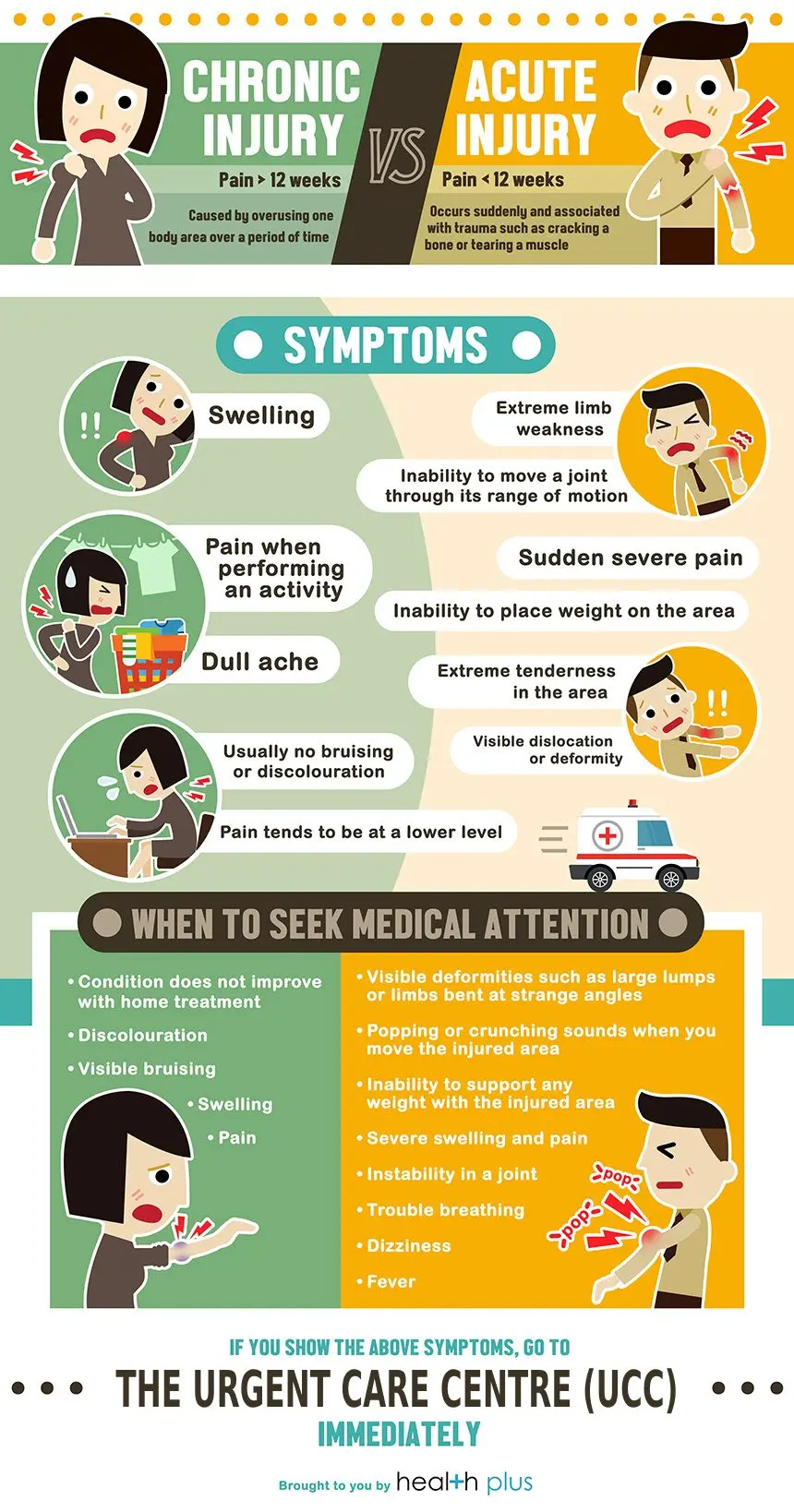Head to the Urgent Care Centre (UCC) to seek appropriate treatment if you experience the above symptoms.
Learn how to distinguish between an acute and chronic injury, so you can find the appropriate treatment you need.
Chronic injury
A chronic injury, or overuse injury, develops when you experience pain for more than 12 weeks. It can arise from repetitive minor strains or poor healing of a previous acute injury.
Acute injury
An acute injury occurs suddenly and is usually traumatic. Examples include a bone fracture or muscle tear.
Signs of chronic or acute injuries
Signs that you have an injury, whether chronic or acute, include:
- Swelling
- Limb weakness
- Pain when performing an activity
- Sudden severe pain may also occur
- Inability to move a joint through its range of motion
- Extreme tenderness in the area
- Dull ache
- Visible dislocation or deformity
For chronic injuries, pain tends to be at a lower level with no bruising or discolouration of skin.
When to seek medical attention
Acute injuries are generally severe, identified through some of the symptoms below:
- Visible deformities such as large lumps, or limbs bent at strange angles
- Popping or crunching sounds when you try to move the injured area
- Inability to support any weight with the injured area
- Severe swelling and pain
- The joint near injured area feels unstable
- Trouble breathing
- Dizziness
- Fever
Chronic injuries have subtle symptoms compared to acute injuries. However, seek advice from a doctor if your injury may have seemed minor but has not improved with home treatment. You should seek medical attention if there is bruising, discolouration, swelling or severe pain after the first few weeks of injury.













